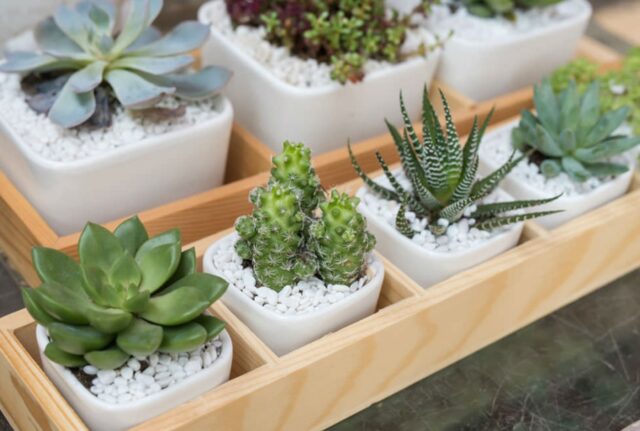
It’s not uncommon for people to grow plants in their gardens. However, not everyone has a yard large enough for a garden, or even have a yard at all, so, if they want to grow some plants, they have to improvise. When that’s the case, people decide to grow house plants or flowers that can grow from flowerpots and thrive in indoor conditions.
One of the most popular houseplants are succulents. Succulents are pretty easy to identify and differentiate from the rest of the house plants. They’re recognizable by their thick, juicy leaves and dessert-like features. Most people think that cacti and succulents are one and the same, but in reality, cacti belong to the succulent family, not the other way around. What makes these plants a good choice for a house plant other than their good looks is the fact that they are not necessarily hard to tend to. Succulents can survive with little water and general maintenance, however, that doesn’t mean that you can just place them anywhere and forget about them. Today, we’re going to talk about the little things you can do to make your succulents healthy and thriving. Let’s get right to it.
1. Keep It Sunny
Succulents thrive in the sunlight. Like most living things on this planet, sunlight is one of the most important factors for growth. That is especially true for these plants. Most of the succulent plants originate from sunny and hot areas, so, don’t expect them to thrive in a dark corner. In ideal conditions, these plants need at least 6 hours in sunlight for best results. We say most because some of them can get by with less. Another thing to keep in mind is, even though they need a lot of sunlight, exposing them to too much can also be a problem. You plant can get sunburnt just as easily as the rest of us.
Ideally, you’d place your plant next to a window that’s facing east or south. That way it can get the most out of the morning sun while still avoiding the midday heat. To be fair, any window or area with enough sunlight will do, so if you live in a building and you don’t have windows on every side of your home, either one will do. Watch how the plant is behaving. If you notice your plant kind of swaying towards the light, it means it’s not getting enough sunlight and it’s time to nudge it in the right direction.
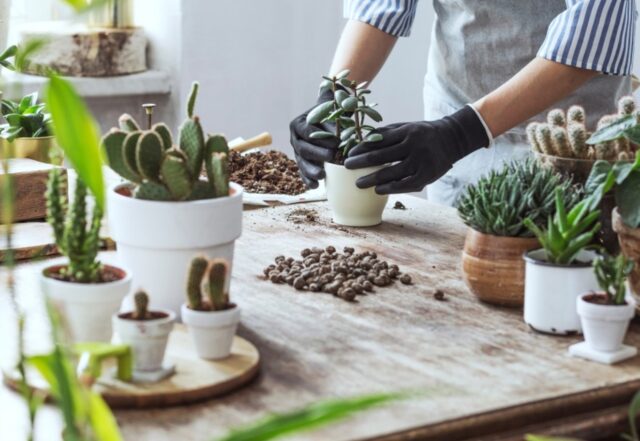
2. Use The Right Soil
Even though these plants are very resistant and can grow in some harsh conditions, they don’t have to. Once you’ve decided on a nice, sunny spot in your home, it’s time to think about the soil you’re putting them in. Most of the houseplants don’t take to overly moist soil – succulents the most. So, ideally, you’ll need a fast-draining soil or a potting mix. One thing to remember is, when you buy a plant, you should re-plant it. The soil they come in is rich in nutrients and moist, to ensure better growth, but once the plant has matured, it doesn’t need it anymore. Luckily for you, you don’t have to waste hours researching the best draining and aerated soil, you can just buy one that’s specially made for succulents at succulentmarket.com and re-pot your new plant.
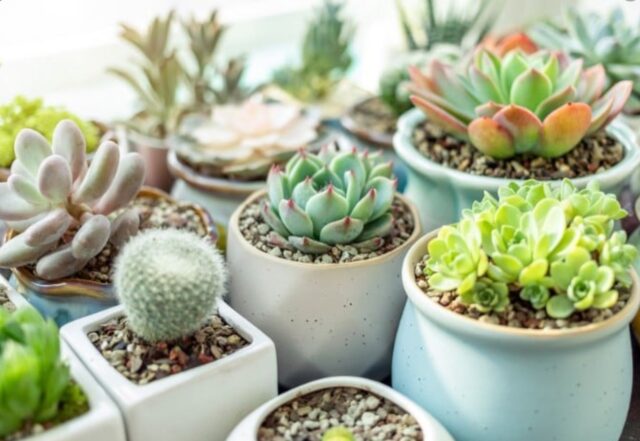
3. Choose The Right Pot
Another thing to pay attention to is the pot itself. Even though a mason jar or other glass containers might look good, don’t use them. They can make the roots rot in time and ruin your plant. Instead of that, use a terra-cotta pot with drainage holes to keep the soil just right and your plant growing. Naturally, you can place that pot inside a decorative one if you’d like to spice things up.
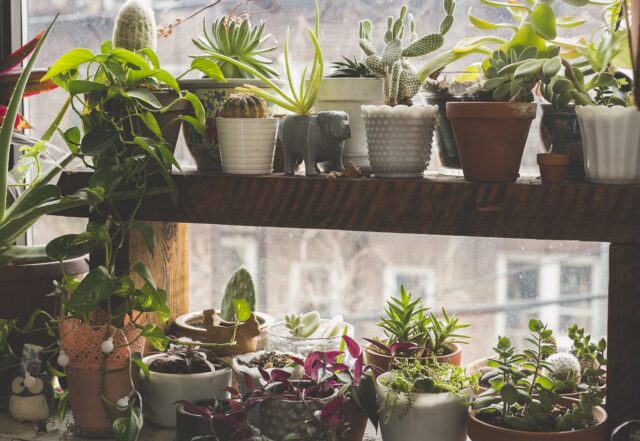
4. It Doesn’t Need A Low Of Water, But It Still Needs Some
Just like any other living thing on this planet, succulents need water to survive and grow. Even though they are known for being great at handling drought, because of their thick leaves and ability to store water, that doesn’t mean they can get by with once in a lifetime watering. Rule of the thumb when it comes to watering succulents is – water them when the soil is dry. Now, naturally, there are variations from plant to plant, but generally, you want to have at least the top two inches of the soil completely dry. Some plants, however, need their soil to be completely drenched before watering again, so it’s best to check the watering needs of your exact plant.
A common misconception about these plants is that they don’t need to be watered during winter because they’re dormant. Well, that’s only partially true. They are dormant indeed, but they still need water – just not as much.
When watering them, avoid pouring water over the leaves directly. That may harm the leaves and leave them discoloured. Water the soil directly and thoroughly and let it drain. What you’re going for with the soil is the feel of a well-drained sponge.
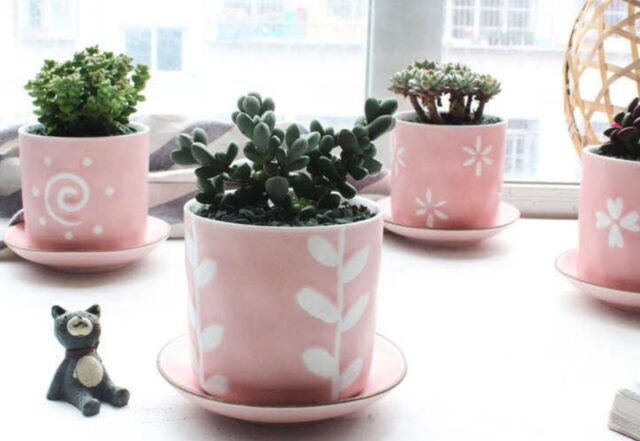
5. Fertilize Occasionally
Another thing these plants do is store nutrients effectively. However, that doesn’t mean you shouldn’t fertilize them from time to time. Most succulents will benefit from a specialized fertilizer for cacti and succulents at about 3 times during spring and summer. You don’t have to fertilize most of the succulents during the winter. If you notice a stump in growth, you may fertilize during summer one additional time, but don’t over-do it. They do need food, but they don’t need too much.
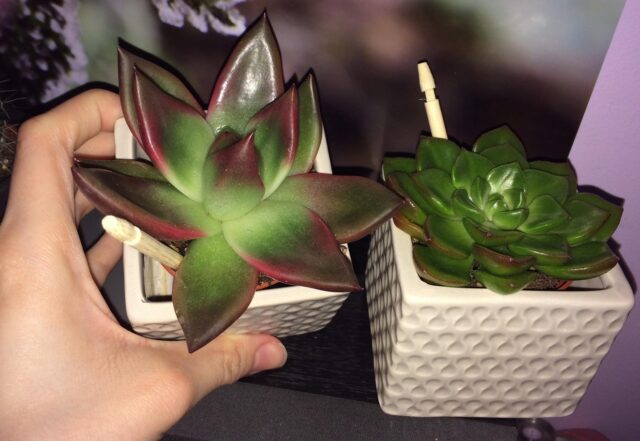
6. Recipe For Success – Warm And Dry Surroundings
With all these things in mind, it’s safe to say that these plants will do just fine with a little bit of water and some sunshine. However, one thing to keep in mind is also the room temperature and the overall humidity. As far as temperature goes, the ideal would be between 20 and 27 degrees Celsius, which is the regular room temperature on the average. During the winter, it’ll handle as low as 10°C. Humidity is another factor that will affect their development, so, don’t grow them in containers that retain moisture or keep them in bathrooms. The average room humidity should do just fine.
As you can see, these plants don’t require a lot of maintenance. They’ll decorate your home with their beautifully shaped and colored leaves and ask the minimum in return. Hopefully, these 6 tips will help you make your plant even prettier and healthier than before.









